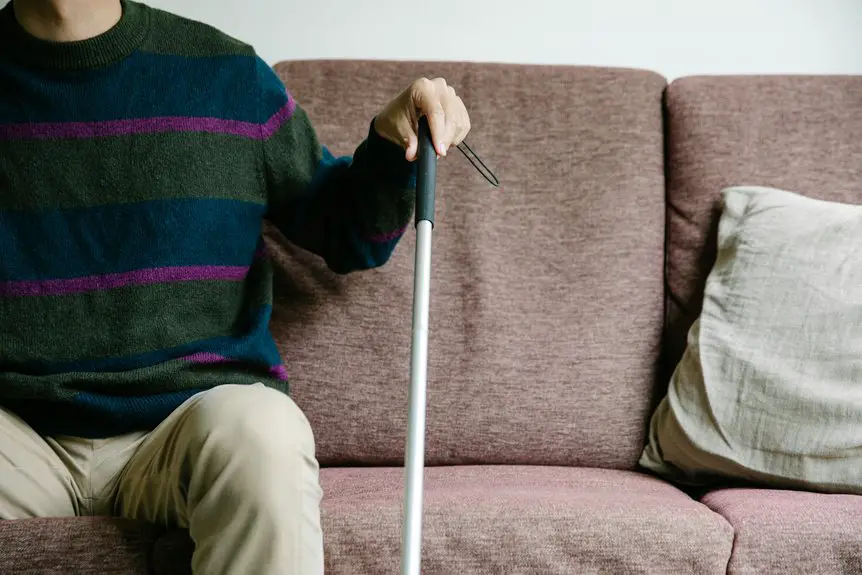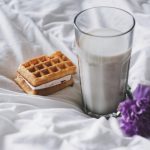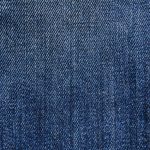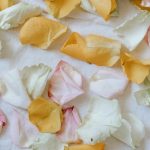You’ll find piqué fabric offers unique textures like Bird’s Eye, with its subtle, breathable dots perfect for polos, and Waffle, featuring a grid-like pattern ideal for towels and loungewear. Each type balances durability, breathability, and style differently, so you can pick the best feel and function for your project. Whether you want something sporty, casual, or luxurious, understanding these variations will help you choose the right piqué fabric for your needs. Exploring further reveals even more specifics and care tips.
Table of Contents
Key Takeaways
- Piqué fabric is a textured knit known for raised geometric patterns, combining breathability with durability, often made from cotton or blends.
- Bird’s Eye Piqué features tiny dot-like patterns, offering lightweight breathability and slight stretch, ideal for polo shirts and sportswear.
- Waffle Piqué has a grid-like texture, enhancing moisture-wicking and durability, commonly used in towels, bathrobes, and casual wear.
- Honeycomb Piqué resembles a beehive pattern, known for warmth and durability, while Mattelassé provides a quilted, luxurious texture for high-end garments.
- Proper care includes gentle cold washing, air drying or low heat, and low-heat ironing to preserve Piqué’s textured structure and longevity.
What Is Piqué Fabric?
Piqué fabric is a textured knit known for its raised patterns, usually featuring small geometric shapes like diamonds or waffles. When you choose piqué, you’re picking a fabric that balances breathability with durability.
It’s often made from cotton or cotton blends, making it soft yet sturdy enough for everyday wear. You’ll find piqué used mostly in polo shirts, sportswear, and casual clothing because it offers a bit of stretch and excellent moisture absorption.
The weaving technique creates a subtle texture that adds visual interest without overwhelming the design. If you want something that’s comfortable, easy to care for, and has a classic look, piqué fabric is a smart choice.
It’s versatile enough to suit both casual and slightly dressier styles.
Characteristics of Bird’s Eye Piqué
Bird’s Eye piqué stands out with its distinctive pattern of tiny, evenly spaced dots that resemble a bird’s eye.
Bird’s Eye piqué features a unique pattern of tiny, evenly spaced dots resembling a bird’s eye.
When you touch it, you’ll notice a subtle texture that adds depth without bulk. This fabric is breathable and lightweight, making it perfect for warm weather.
You’ll appreciate its durability, as the weaving technique creates a strong, resilient material. Bird’s Eye piqué often features a slight stretch, giving you comfort and ease of movement.
Its refined appearance makes it a popular choice for polo shirts and casual wear, balancing style and function effortlessly.
If you want fabric that keeps you cool while looking polished, Bird’s Eye piqué is a smart pick that combines texture, durability, and breathability in one neat package.
Exploring Waffle Piqué Fabric
When you touch waffle piqué fabric, you’ll notice its unique grid-like texture created by the special weave.
This structure not only adds visual interest but also enhances breathability and durability.
You’ll often find waffle piqué used in casual wear and sports apparel because of these practical qualities.
Texture and Weave
Although it might look simple at first glance, waffle piqué fabric offers a unique texture that sets it apart from other weaves. When you touch it, you’ll notice the raised square or diamond-shaped pattern resembling a waffle.
This three-dimensional surface results from a special weaving technique that interlaces yarns to create small recessed and elevated areas. Unlike flat fabrics, waffle piqué’s weave gives you excellent breathability and moisture-wicking properties, making it comfortable in warmer weather.
The weave also adds durability and a subtle stretch, so it keeps its shape well. When you choose waffle piqué, you’re picking a fabric that combines texture with function, offering a tactile experience that’s both visually interesting and practical for everyday wear.
Common Uses
You’ll find waffle piqué fabric in a variety of everyday items thanks to its breathable texture and durability.
When you pick up a waffle piqué towel or bathrobe, you’ll notice how it quickly absorbs moisture while remaining lightweight. This fabric is also popular in casual clothing like polo shirts and light jackets because it provides comfort without overheating.
If you’re into home décor, waffle piqué often appears in cushion covers and throws, adding subtle texture and coziness to your space. Its durability makes it a favorite for reusable kitchen cloths and aprons, too.
Other Popular Piqué Fabric Variations
You’ll find several popular piqué fabric variations beyond waffle, like honeycomb piqué, which offers a unique textured look.
Mattelassé fabric adds a quilted effect, giving your garments extra dimension.
It’s also helpful to compare birdseye and waffle patterns to understand their subtle differences.
Honeycomb Piqué Texture
Honeycomb piqué texture stands out with its distinct, raised pattern that resembles a beehive’s hexagonal cells.
When you choose this fabric, you get a durable yet breathable material perfect for warm weather. The honeycomb design not only adds visual interest but also enhances airflow, keeping you comfortable throughout the day.
You’ll find honeycomb piqué commonly used in polo shirts and casual wear because it combines style with functionality. Its textured surface helps hide wrinkles and minor stains, making it low-maintenance.
Plus, the fabric’s thickness offers a bit of insulation without feeling heavy. If you want a fabric that balances structure, comfort, and a unique look, honeycomb piqué is a smart choice that stands apart from smoother piqué textures.
Mattelassé Fabric Features
While exploring piqué fabric variations, Mattelassé stands out for its quilted, padded appearance that adds texture and depth.
When you choose Mattelassé, you get a fabric woven with double threads, creating a raised pattern that feels plush and luxurious.
It’s often used in upholstery, bedding, and high-end clothing because of its durability and distinctive look.
You’ll notice its unique dimensional effect, which sets it apart from flatter piqué types like bird’s eye or waffle.
Mattelassé’s texture not only enhances visual appeal but also provides added comfort and insulation.
If you want a fabric that combines elegance with functionality, Mattelassé is a great pick that brings both style and substance to your projects.
Birdseye vs. Waffle
Beyond the plush texture of Mattelassé, piqué fabrics also include simpler yet distinctive weaves like birdseye and waffle.
When you compare birdseye and waffle, you’ll notice birdseye features tiny, repetitive diamond-shaped patterns resembling a bird’s eye. This weave offers breathability and subtle texture, making it great for lightweight shirts and baby clothes.
Waffle, on the other hand, has a grid-like pattern with raised squares, providing more pronounced texture and excellent insulation. You’ll find waffle fabric commonly used in towels and robes because it absorbs moisture well.
Both fabrics share piqué’s characteristic raised pattern but serve different purposes: birdseye leans toward delicate, airy garments, while waffle offers warmth and absorbency.
Knowing these differences helps you pick the right piqué type for your project.
Common Uses for Different Piqué Types
Since piqué fabric comes in various textures and weights, each type suits different purposes.
Piqué fabric’s diverse textures and weights make it ideal for a range of unique uses.
You’ll find that understanding these uses helps you pick the perfect piqué for your project.
Bird’s eye piqué, with its tiny, repetitive pattern, is often chosen for:
- Polo shirts, offering breathability and durability
- Baby clothes, thanks to its softness and texture
- Sportswear, where moisture-wicking is essential
- Casual dresses, providing subtle texture and comfort
- Table linens, because of its elegant appearance and sturdiness
Waffle piqué, thicker and more textured, works best for towels, robes, and cozy loungewear.
This versatility means you can confidently select the piqué type that matches your needs, whether for fashion or home textiles.
How to Care for Piqué Fabric
Even though piqué fabric is known for its durability, you’ll want to handle it properly to keep its texture and shape intact.
Always wash piqué in cold water on a gentle cycle to prevent shrinking or distortion. Use mild detergent and avoid bleach, which can weaken the fibers.
When drying, opt for air drying or tumble dry on low heat to maintain the fabric’s structure. Iron piqué on a low to medium setting while it’s slightly damp to smooth out wrinkles without crushing the textured pattern.
Also, avoid wringing the fabric, as it can damage the weave. By following these simple steps, you’ll preserve the crisp, textured look of your piqué garments and keep them looking fresh longer.
Choosing the Right Piqué for Your Project
How do you decide which piqué fabric best suits your project? Start by considering your fabric’s purpose and characteristics. Each piqué type offers unique textures and durability, so match them to your needs.
Choose your piqué fabric by matching its texture and durability to your project’s specific needs and purpose.
Ask yourself:
- Will the fabric need to be breathable or moisture-wicking?
- How important is texture — subtle or pronounced?
- Does the project require stretch or rigidity?
- What’s the expected wear and tear?
- How easy should it be to care for?
For casual wear, bird’s eye piqué is soft and breathable.
For more structured garments, waffle piqué adds texture and strength.
If you want a classic look with durability, honeycomb piqué works well.
Keeping these factors in mind guarantees you pick the perfect piqué that fits both style and function.
Comparing Piqué to Other Textured Fabrics
When you compare piqué to other textured fabrics, you’ll notice its distinctive raised patterns and durability stand out. Unlike waffle or seersucker, piqué offers a crisp texture with well-defined geometric shapes, making it ideal for structured garments like polo shirts.
While waffle fabric has a softer, more casual feel with a grid-like texture, piqué’s firmness holds shape better over time. Seersucker’s puckered surface creates a lightweight, breathable fabric suited for warm weather, but piqué balances breathability with sturdiness.
If you want a fabric that combines texture, durability, and a polished look, piqué is a smart choice. It’s more resilient than many textured fabrics, perfect for both casual and semi-formal wear, giving you versatility without sacrificing comfort.
Frequently Asked Questions
Can Piqué Fabric Be Used for Upholstery?
You can use piqué fabric for upholstery, but keep in mind it’s better suited for light-use furniture since it’s breathable and textured. For heavy-duty pieces, you might want a more durable, tightly woven fabric instead.
Is Piqué Fabric Suitable for Summer Clothing?
You’ll find piqué fabric perfect for summer clothing because it’s breathable and lightweight. Its textured weave allows good air circulation, keeping you cool and comfortable during hot days, making it ideal for warm-weather outfits.
How Is Piqué Fabric Made in Factories?
Think of weaving piqué fabric like a painter layering textures on canvas. You’ll see factories using double-knit machines, interlocking yarns in intricate patterns, creating that raised, textured surface you recognize and love.
Are Piqué Fabrics Hypoallergenic?
You’ll find piqué fabrics generally hypoallergenic since they’re made from natural fibers like cotton, which reduce irritation. However, if you have sensitive skin, always check for blends or treatments that might cause reactions before buying.
Can Piqué Fabric Be Dyed at Home?
Dyeing piqué fabric at home isn’t a walk in the park, but you can do it with proper fabric dye and patience. Just remember to pre-wash, follow instructions, and test a small swatch first to avoid surprises.
- Does Chiffon Fabric Stink - July 15, 2025
- Does Chiffon Fabric Affect the Economy - July 15, 2025
- Does Cotton Fabric Have a Nap - July 15, 2025







